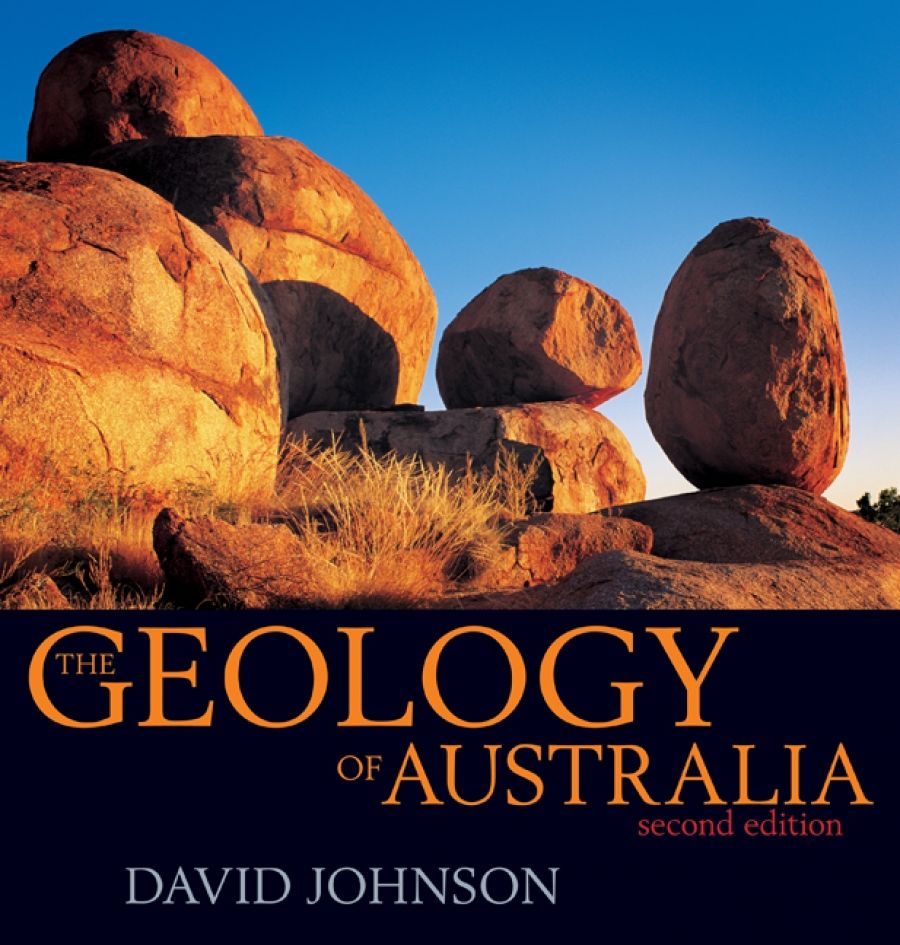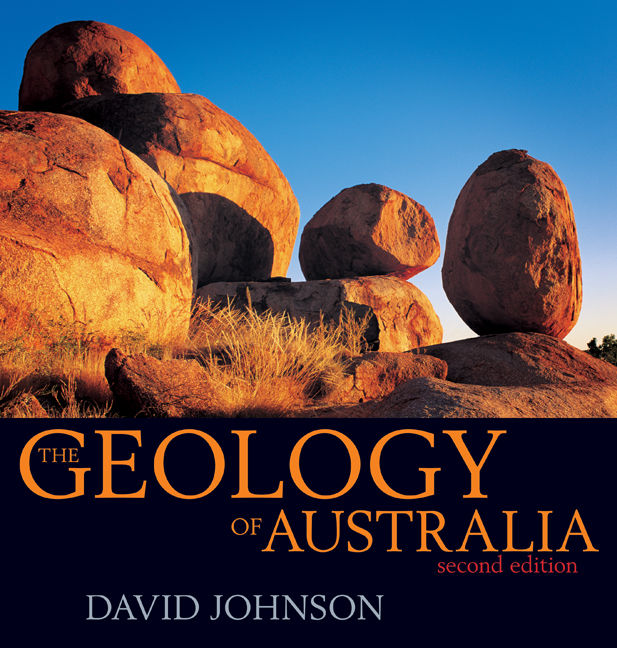
- Free Article: No
- Contents Category: Nature Writing
- Review Article: Yes
- Article Title: Aggregate and fission
- Online Only: No
- Custom Highlight Text:
No doubt there is a diverse readership for a book about the geological evolution of Australia. In fact, the last comprehensive text intended for experts was The Geological Evolution of Australia and New Zealand (1968), by D.A. Brown, K.S.W. Campbell and K.A.W. Crook; and nothing of major scope for a lay audience has appeared for a longer time. In the past forty years, of course, the subject has advanced enormously in a general sense, not the least being the revolution in our understanding of the mobility and interactions of the outer shell of the Earth through the processes labelled ‘plate tectonics’. Our specific geological knowledge of Australia has also progressed significantly.
- Book 1 Title: The Geology of Australia
- Book 1 Biblio: CUP, $69.95pb, 276pp, 0 521 60100 2
- Book 1 Cover Small (400 x 600):

- Book 1 Cover (800 x 1200):

Some facts about our continent are globally striking, and provide fertile material for a book covering both global and regional aspects of geology. For example, the oldest crystals on Earth – about 4.3 billion years old and only 250 million years younger than the formation of the Earth itself – are found in the Yilgarn region of Western Australia. Research on these crystals of zircon is providing clues to the nature of the earliest terrestrial crust and the development of the hydrosphere (oceans and other bodies of water), coincident with the period of enormous meteorite bombardment identified in studies of the ancient crust more extensively preserved on our satellite, the Moon.
The rock types found in the Pilbara region of north-west Australia have also informed our understanding of the development of the earliest continental crust, the development of photosynthetic life, and the global turning point of atmospheric evolution when molecular oxygen began to accumulate in the atmosphere and oceans, flushing out dissolved iron and forming some of the world’s largest, and hugely important economically, deposits of iron ore.
All of the continental crust east of a line running roughly from Mt Isa and Broken Hill, and extending north and south of these respectively, has been created in the last 500 million years. This includes the elongated strips of submerged crust forming the Lord Howe Rise and Norfolk Ridge, which, prior to the formation of the Tasman Sea between eighty-five to fifty-five million years ago, were adjacent to the present eastern margin of Australia. Our global understanding of the basic mechanisms of continental crust formation has been greatly influenced by study of the genesis and evolution of this huge sector.
The Geology of Australia emphasises the position of Australia on the margins of successive supercontinents – Rodinia some 1000 million years ago, and Pangea at about 250 million years – and our position with respect to the South Pole and global cooling and warming events. Continents aggregate and fission through time; our latest breakaway involved separation from Antarctica about fifty million years ago, establishing a clear path for circum-Antarctic Ocean circulation and perhaps the initiation of a trend towards global cooling culminating in a prolonged ice age two million years ago.
Given all the potential richness of material, David Johnson has produced a somewhat disappointing effort. The structure of the book is fundamentally odd, with a penultimate generalist chapter on planets, moons, meteorites and impact craters that would have been much better placed earlier. And there are many outright errors. For example, the core and mantle of the Earth are stated to make up eighty-three per cent by volume of the Earth, whereas, in fact, the crust comprises an order of magnitude less than the implied balance of seventeen per cent. Irritatingly, many place names mentioned in the text do not feature on any explanatory figure. The labelling on a number of the maps is microscopic, and many of the figures depicting the continent and neighbouring sea floor are badly dated, with poorly resolved topography and bathymetry. Most andesite, the characteristic rock type of explosive volcanoes such as Mt St Helens in the US, and Ruapehu in New Zealand, is not simply formed by melting of the mantle above a subducting lithospheric plate.
Regrettably, the book adopts the parochial palaeogeographical maps originally produced by our federal geological survey in the late 1980s, which neglect the broader context of neighbouring continents and oceans. Note that the outline of the continent we recognise as Australia was only created about fifty million years ago, so it makes no sense to be restrictive rather than enlarging the context in which the development of the present continental outline has emerged.
As a place to start on a journey of discovery about the geology of the Australian continent, however, this book serves a purpose, with an up-to-date reference list that could serve as a stimulus to more detailed reading.


Comments powered by CComment